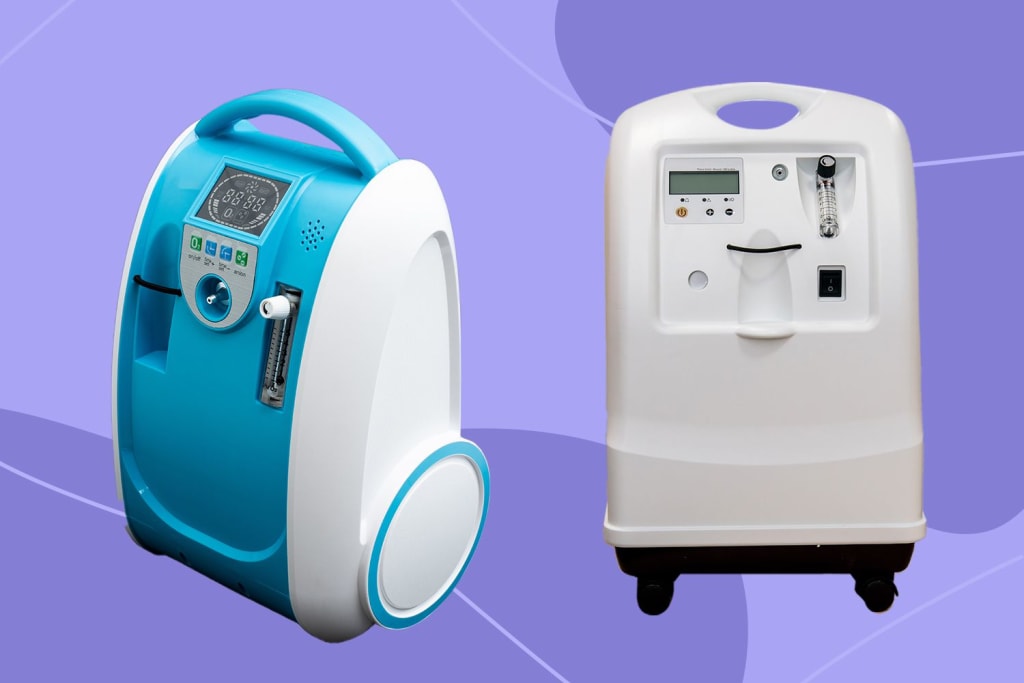Portable Oxygen Concentrators: A Comprehensive Guide
Portable oxygen concentrators have revolutionized the way people with respiratory conditions manage their health.

Portable oxygen concentrators have revolutionized the way people with respiratory conditions manage their health. These devices provide a constant supply of oxygen, allowing patients to stay active and maintain a good quality of life. In this article, we will take a closer look at these devices, how they work, and how they can benefit those who need them.
What is a Portable Oxygen Concentrator?
A portable oxygen concentrator (POC) is a medical device that provides oxygen therapy to patients with respiratory conditions. Unlike traditional oxygen tanks, which are heavy and must be refilled, POCs are lightweight and can be carried around by patients wherever they go. These devices work by separating oxygen from the air and delivering it to the patient through a nasal cannula or a face mask.
How Does a Portable Oxygen Concentrator Work?
Portable oxygen concentrators work by using a process called pressure swing adsorption. Air is drawn into the device and passed through a series of filters to remove impurities such as nitrogen and carbon dioxide. The remaining air is then compressed and passed through a sieve bed that contains a material called zeolite. Zeolite selectively adsorbs nitrogen, allowing oxygen to pass through and be collected in a reservoir. This oxygen is then delivered to the patient through a tube and a nasal cannula or a face mask.
What are the Benefits of Using a Portable Oxygen Concentrator?
There are many benefits to using a portable oxygen concentrator. These devices allow patients to maintain an active lifestyle and participate in social activities that might not have been possible with traditional oxygen tanks. POCs are also much more convenient than traditional oxygen tanks, as they can be taken on airplanes, buses, and trains. Additionally, POCs are much safer than traditional oxygen tanks, which can be a fire hazard if they are not handled properly.
Portable Oxygen Concentrator Market Trends
According to the latest report by IMARC Group, The global portable oxygen concentrators market size reached US$ 1.6 Billion in 2022. Looking forward, IMARC Group expects the market to reach US$ 2.7 Billion by 2028, exhibiting a growth rate (CAGR) of 8.3% during 2023-2028.
Factors to Consider When Choosing a Portable Oxygen Concentrator
- When selecting a portable oxygen concentrator, several factors should be taken into consideration:
- Oxygen Requirements: It is crucial to determine the prescribed oxygen flow rate and whether the POC can meet those requirements. Different models offer various oxygen flow rates, so consulting with a healthcare professional is essential.
- Battery Life: The battery life of a portable oxygen concentrator determines how long it can operate without being connected to a power source. Longer battery life allows for extended usage and flexibility, particularly during travel or outdoor activities.
- Size and Weight: Since the primary purpose of a portable oxygen concentrator is mobility, the size and weight of the device are crucial considerations. Lightweight and compact models are more convenient for individuals who lead active lifestyles.
- Noise Level: Some portable oxygen concentrators produce noise during operation. It's essential to choose a model that emits minimal noise to ensure comfort and discreet oxygen therapy.
Maintenance and Care of Portable Oxygen Concentrators
To ensure the longevity and optimal performance of a portable oxygen concentrator, regular maintenance and care are necessary:
- Clean the Filters: Follow the manufacturer's guidelines to clean or replace the filters regularly. This helps prevent the accumulation of dust and debris, maintaining the device's efficiency.
- Check the Battery: Inspect the battery for any signs of damage or deterioration. Clean the battery contacts and ensure a secure connection to maximize battery life.
- Store Properly: When not in use, store the portable oxygen concentrator in a clean and dry environment. Avoid exposing it to extreme temperatures or humidity, which can affect its functionality.
Common Misconceptions about Portable Oxygen Concentrators
- Portable Oxygen Concentrators Are Noisy: While some older models may have been noisy, modern portable oxygen concentrators are designed to operate quietly, allowing users to enjoy a peaceful environment.
- Portable Oxygen Concentrators Are Difficult to Use: POCs are designed with user-friendliness in mind. They feature intuitive interfaces and controls, making them easy to operate even for individuals who are not technologically inclined.
Conclusion
Portable oxygen concentrators have been a game changer for patients with respiratory conditions. These devices provide a constant supply of oxygen, allowing patients to stay active and maintain a good quality of life. If you or someone you know has a respiratory condition, a portable oxygen concentrator may be the right choice. Talk to your healthcare provider to learn more about these devices and how they can benefit you.
About the Creator
Abhay Rajput
I am working in market research company that provides market and business research intelligence across the globe.






Comments
There are no comments for this story
Be the first to respond and start the conversation.